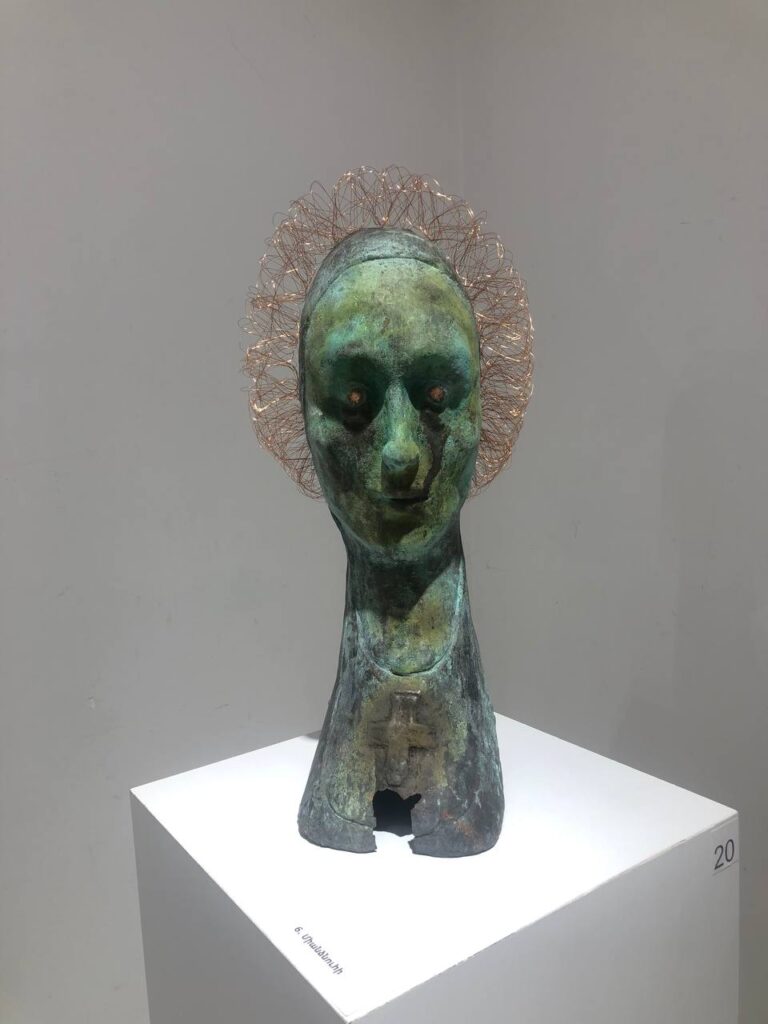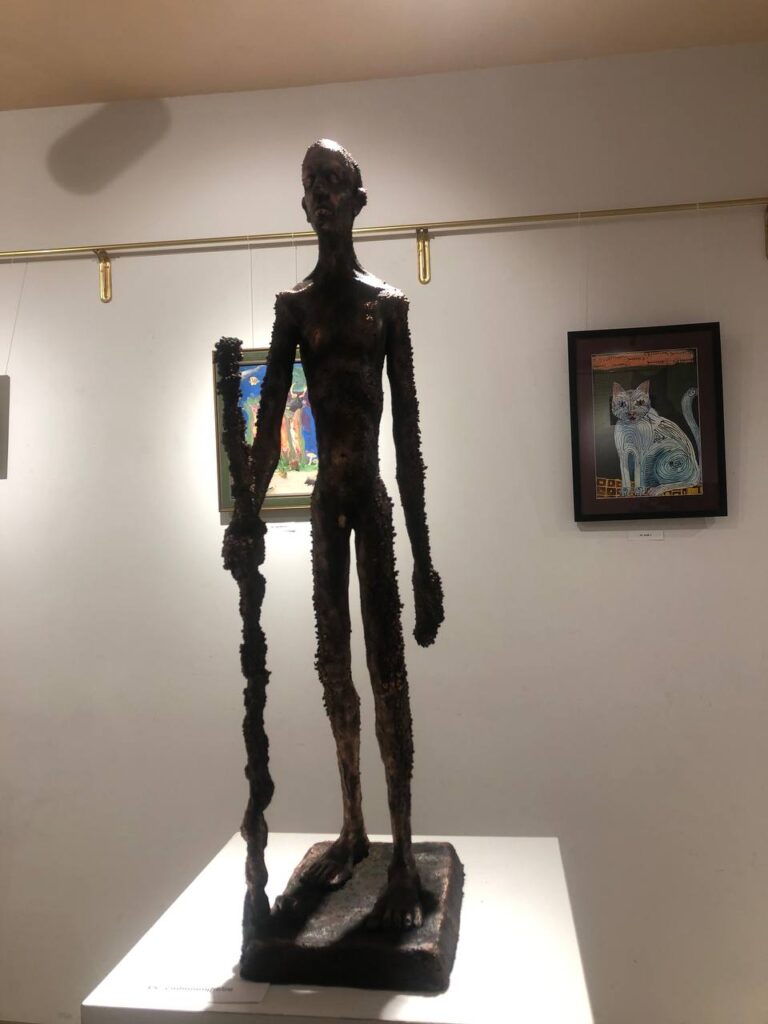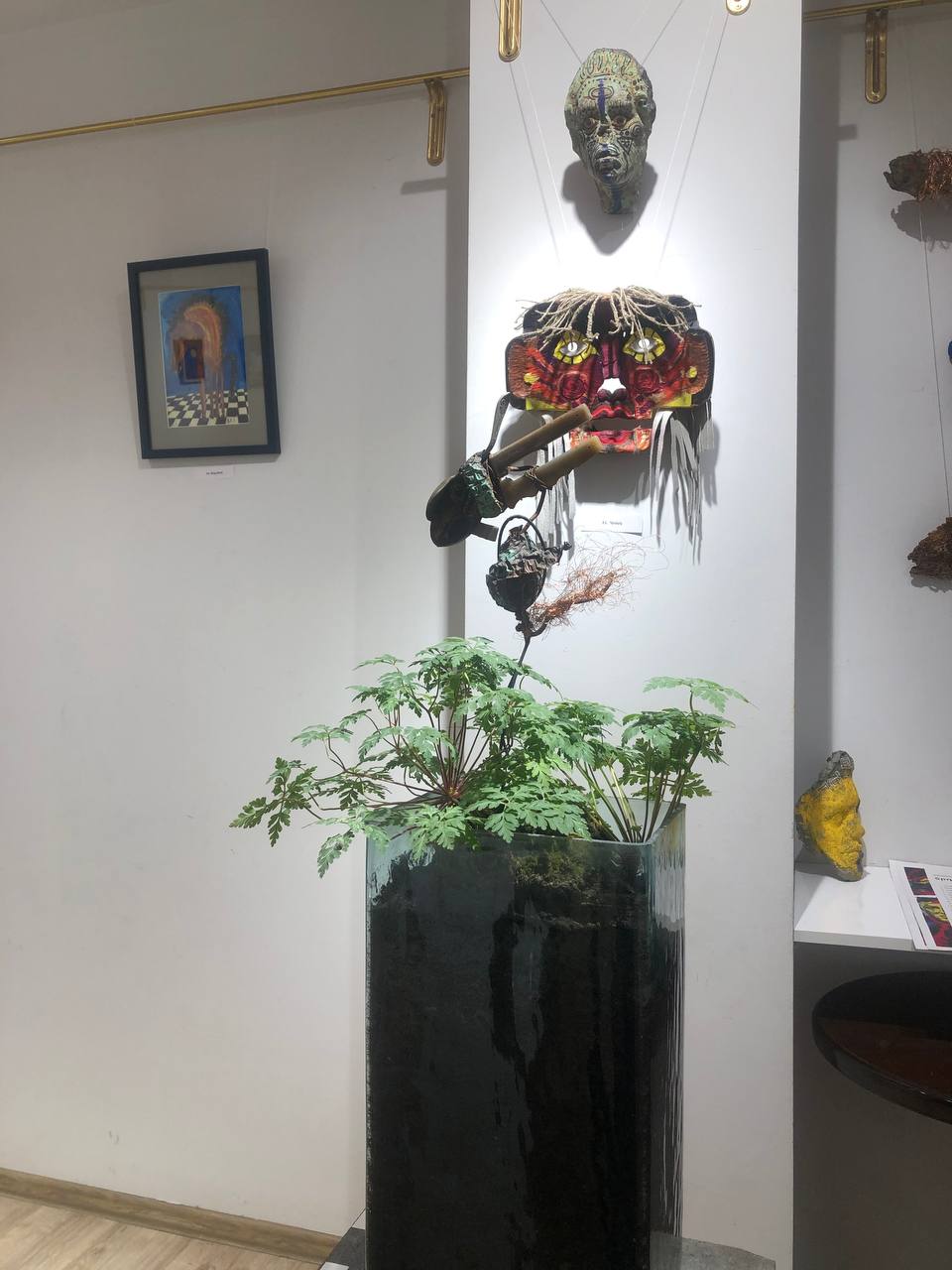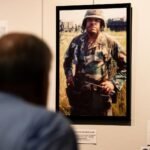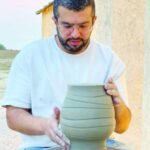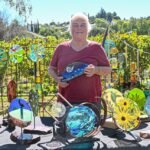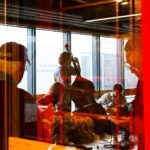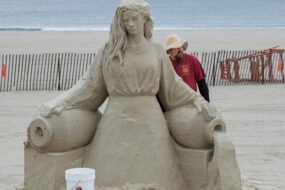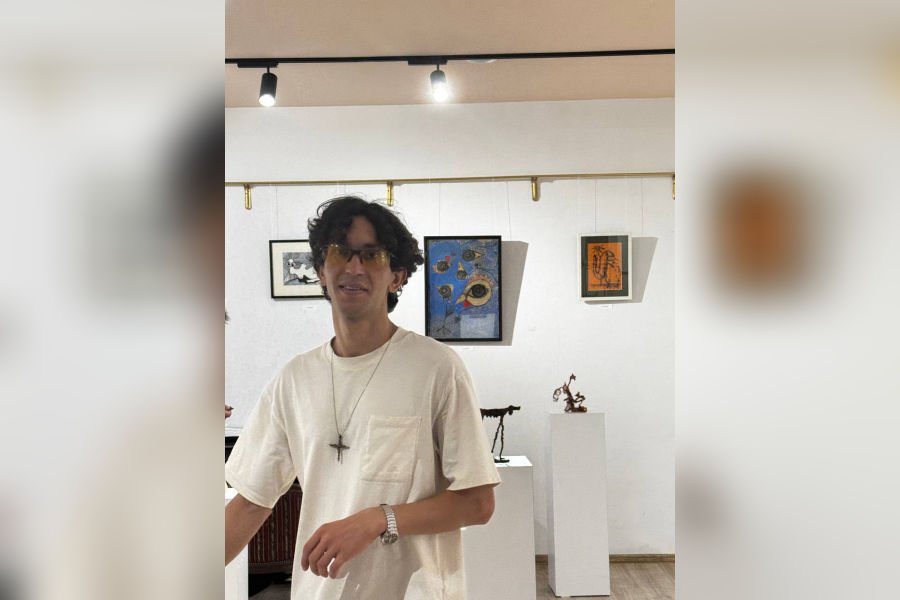
The first solo exhibition of sculptor-painter Trdat Galstyan (TrdArt) opened from September 1 to 10, at the Pyunik Development Center in Yerevan. Galstyan spoke to the Weekly about his art, unveiling his inner world and creative journey for the reader.
Born in Hrazdan, Galstyan began creating as a child, around the age of three. In his family, art is almost as natural as air. His sister is a designer-artist, his father an architect and sculptor and his mother practiced tapestry weaving. Galstyan explained that he was always given freedom, and through that, he realized that art itself thrives in freedom.
Faith holds a special place in Galstyan’s life. He is convinced that it must be the foundation of every person’s life, for one never knows what might happen in the next moment. “One must value every instant and not burden life, no matter how many problems there are,” he said.
Galstyan graduated from the sculpture department of Yerevan’s Panos Terlemezyan State College of Fine Arts in 2015. He noted that while this is not his first solo exhibition, it is the first of such scale. Previously, his works were displayed in various restaurants and hotels, where only a few pieces were presented.
Galstyan’s art does not fit into a strict genre — it is mostly within the modern movement, featuring innovative styles and combinations of different materials. He often uses penoplex, copper wires and even everyday objects, such as spoons. On canvas, he employs oil pastel, pastel and particularly values his graphic works. Galstyan admitted that he often cannot even define what he is painting — the images emerge during the very process itself.
“Some idea comes to my mind, and I try to realize it — make it visible, tangible. But bringing it to life is not always easy. In imagination, it appears one way, but in practice, I face material, dimensional, sometimes even spiritual and energetic difficulties. Creating is like catching a spark — you must shape it before it vanishes,” he shared.
The works presented in the exhibition were mostly created after 2021, with some even dated 2025. Galstyan emphasized that he is in a constant creative state and considers himself a “sacrifice” of art. His main source of inspiration is people, especially those who possess intellect and taste. He noted that the influence of one’s surroundings is significant — he believes that one must constantly be privy to quality and tasteful things, so that there are no distortions in art.
For Galstyan, all his works are valuable, as they contain his strength and energy. Yet he confessed that there are certain pieces he feels a particular longing and attachment toward.
He spoke about one of his works — a portrait of a friend: “My friend was sitting near a campfire, and when I noticed the warm, orange light falling across his face, I was deeply impressed. I asked him to sit comfortably, took my easel and began sketching his portrait on paper.” He continued, “Among my sculptures, one of the most striking is The Nun. It expresses a mystical figure,” Galstyan shared.
Although he also sketches and paints, he imagines himself more as a sculptor. For him, the right conditions for creating can emerge anywhere. “I can suddenly imagine that I must sculpt something right now, and begin working with whatever is at hand. These processes are always within me — they never stop,” he admitted. He also shared that sometimes, everyday objects become his creative material. “For example, sometimes something random catches my eye, and I transform it into a volumetric relief,” said Galstyan.
One of his favorite colors is undoubtedly yellow. To him, it symbolizes warmth and joy. “When I look at the sun, yellow gives me the mood to smile. But in general, I love all colors — each carries its own feeling,” he said.
Art accompanied Galstyan even during his military service.
He served in Hadrut and took part in the 44-day war in 2020, defending Artsakh. “I saw many things, but art helped me overcome the psychological heaviness, ease the weight of my experiences and return to life,”
he explained. His words remind us how important it is to live in the present, for by dwelling in the past or future, one often loses the value of the moment.
Galstyan discussed how his works contain mystical energy. He explained that sometimes these pieces serve as a way of releasing negative emotions from within — giving them form. They are born suddenly, becoming characters filled with intense feelings.
Galstyan has changed studios several times, explaining that he always struggles with relocations — each time it was a heavy experience. “The environment is very important for me — the energy of a place influences the work. For example, in some of my pieces I have used a technique called ‘galvanoplasty,’ performed through electrolysis,” he explained.
He also shared his love for animals, having kept cats that have their own character — independent and sometimes even treacherous. “Every animal has a unique personality, and this diversity also inspires me,” said Galstyan.
In his works, one may sometimes encounter strange figures with large eyes or animal-like forms. He shared that they come from within, unconsciously. “To be honest, sometimes it feels as though I did not create them myself, but that some deeper force brought them into the world,” he said.
Galstyan remarked,
“Art is always by your side. You can create both in old age and in childhood. If you are beside art, art is beside you.”
Yet he is also aware that the life of an artist has never been easy. He recalled Van Gogh’s example — his life was full of contradictions, trials of love and even material hardships. “That is inseparable from the fate of a creative person,” said Galstyan.
He explicated that he strongly feels people’s energy. “Sometimes, even without speaking, I can sense what influence someone has on me. It’s intuitive. Even on the opening day of the exhibition, what made it light and pleasant for me was precisely that energy,” he shared.
According to Galstyan, life is like the cycle of nature — one being consumes another, but the chain is in constant motion. The same is true of human life — we never know what will happen in five minutes, let alone decades from now. It is important to live in the present, though naturally, one must also think of the future — of generations, of family or of the country.
While speaking with Galstyan, one could clearly observe that he is more mature than his age suggests. He seems to possess an experience that most of his peers do not. While many are caught up in minor problems or self-assertions, Galstyan sees a broader picture. That comes from his values and way of thinking.
He concluded with the importance of values: “The most important thing I notice is human authenticity, morality and honesty. You cannot fake those — you must truly know a person to understand what values they hold.”
For Galstyan, art is not merely a profession — it is a way of living. In his words and works, you see reflections of both pain and light. Art has allowed him to pass through life’s difficulties and transform them into new strength. His creations, however strange or mysterious they may appear at first glance, are in fact records of human inner experience. And that is their true value: they do not merely create beauty but also remind us how vital it is to live with sincerity, faith and presence in the moment.
You can explore Trdat Galstyan’s works on his Instagram page.
All photos were taken by the author unless otherwise noted.

